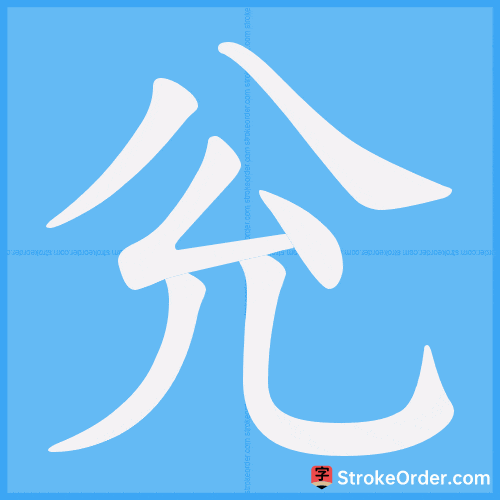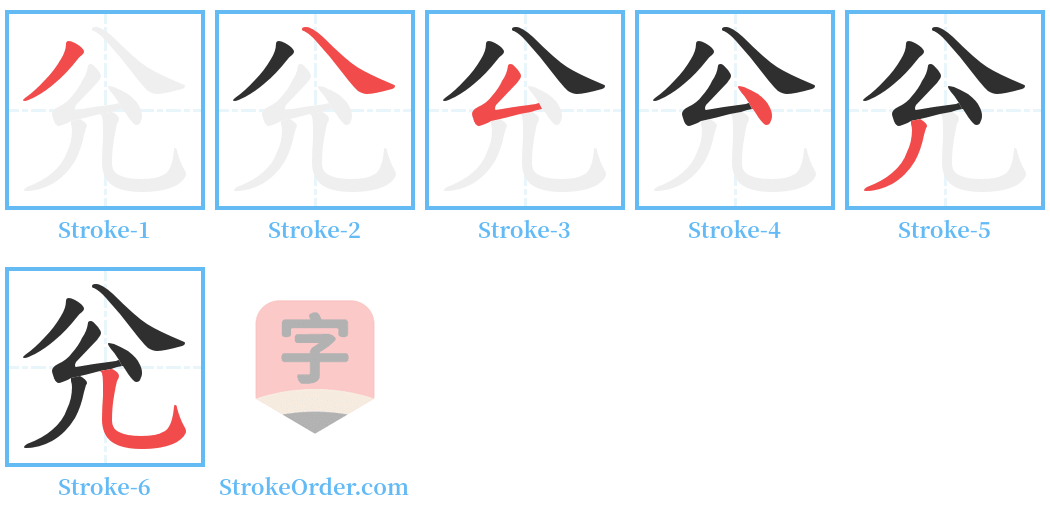兊 Stroke Order
Animated Stroke Order of 兊

Stroke Order Diagrams for 兊

Information of 兊
Pinyin
duì、 ruì、 yuè
Radical
儿
Strokes
6 strokes
Usage
★★
Definition
兊 (duì)
1. Anciently the same as "兑" (to exchange or to trade).
2. A compound ideograph. It consists of a person (人) and a boundary (囗), symbolizing the dispersal of the air from the eight trigrams. The older brother (兄) and the blessing (祝) share a similar meaning. With the element eight (八), it shares meanings with the character 曾, and in modern usage it appears as 悦 (joyful). The primary meaning is joy.
Same as the original meaning: exchange and speaking. — "Shuowen Jiezi" (说文)
3. Phono-semantic compound. It consists of the character 金 (metal) and the sound element 兑 (duì). The primary meaning is sharp or pointed.
The same meaning applies; it refers to sharpness or the edge. — "Shuowen Jiezi". Note: "芒" refers to the tips of grass.
4. Phono-semantic compound. It consists of the character 心 (heart) and the abbreviated sound of 说 (to speak). Originally written as "说". The primary meaning is happiness and pleasure.
It shares the original meaning with the character 悦, akin to speaking, wiping away, and liberation. If a person’s heart is troubled, it can be explained. — "Shuowen Xitong Lun" (说文系传统论)
The characters "说" and "悦" are old and modern forms; guests observe that the crown prince has a joyful expression. — Mei Cheng's "Qi Fa" (七发)